Square Hollow Section
Square hollow sections for structural applications and construction projects.
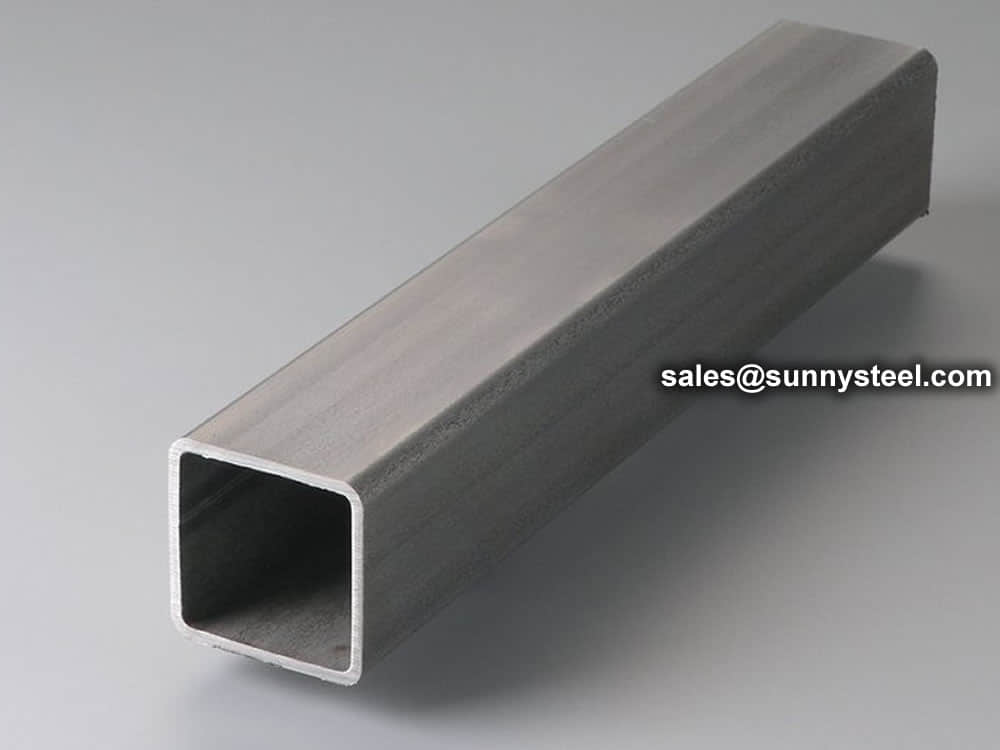
Square hollow section comes in different sizes, specifications and wall thicknesses.
Square Hollow Sections (SHS) are a type of structural steel with a square cross-section. They are hollow tubes, often made from hot-rolled steel coils or cold-formed steel sheets. SHS is known for its excellent strength-to-weight ratio, making it an ideal choice for various structural and architectural purposes.
SHS steel is a popular structural steel tube that has four equal sides, giving it a symmetrical appearance. SHS stands for Square Hollow Section. It has a flat surface for easy joining and soldering with minimal edge preparation required.
During the manufacturing process of SHS, the flat steel plate is gradually rounded and the edges are ready for welding. The edges are then welded together to form a round tube called the parent tube. This mother tube then goes through a series of forming processes into the final square shape.
SHS is used in structural, industrial, mechanical and architectural applications requiring a balance of strength, function and aesthetic appeal. They are used to construct frames, doors and columns. Its purpose is similar to that of RHS, and it is generally available in the same thickness as RHS. Galvanized SHS or square hollow section steel is very durable and resists cracks.
Its uniformity makes it predictable to use and visually appealing.
It has a high weight-to-strength ratio.
It’s easy to bend, and because square steel tubing is inexpensive, it’s cost-effective- even for large projects.
Square Hollow Section, SHS, Square Box, Painted, Galvenised, ERW, Black, Mild Steel
Steel tube is easily recyclable. Many projects take advantage of square steel tubing, including all types of buildings, highway guardrails and signage, support columns, trusses, bridges, heavy equipment, storage systems, and exercise equipment.
The hollow section provided by Sunny Steel is widely used in civil engineering & construction fields, those structural steel hollow sections are important constituent part of buildings and briges.
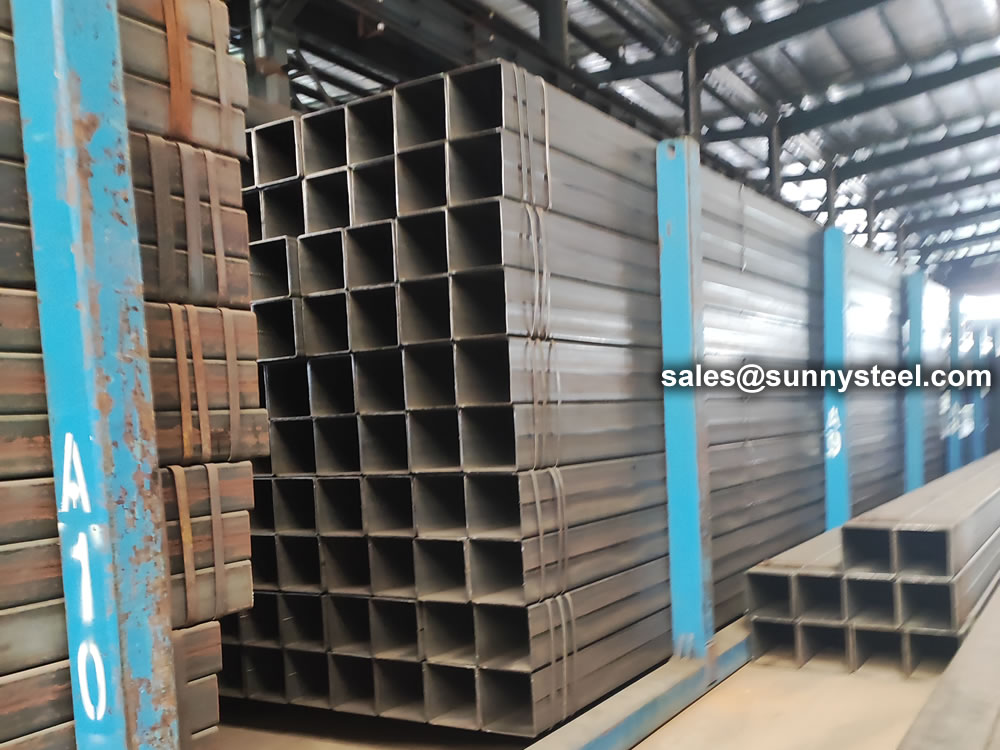
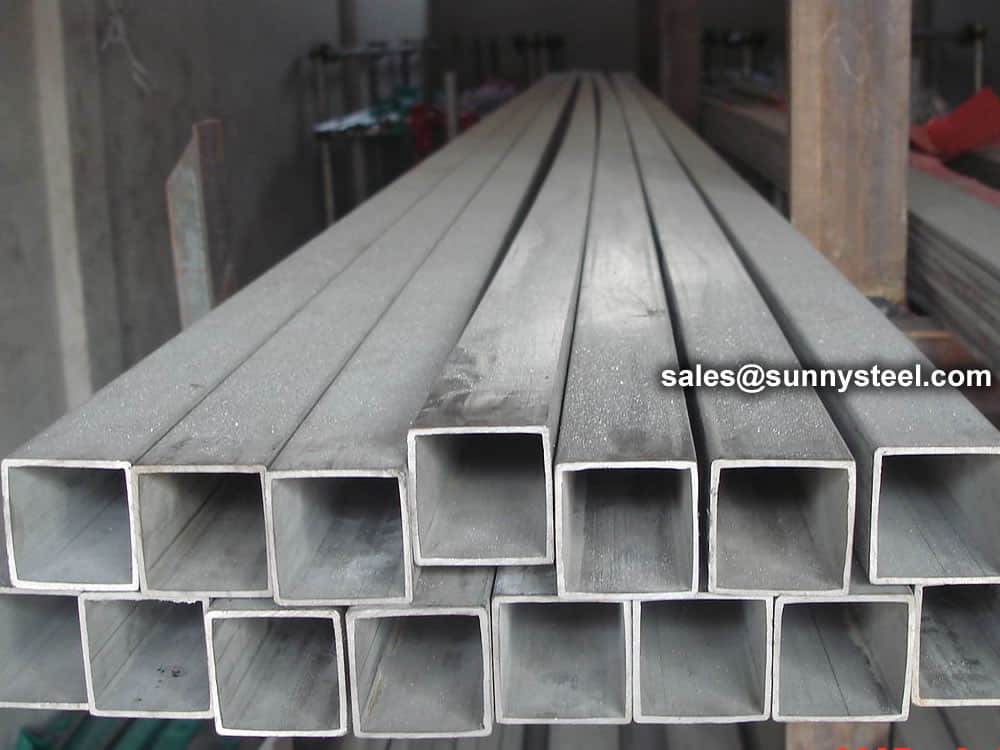
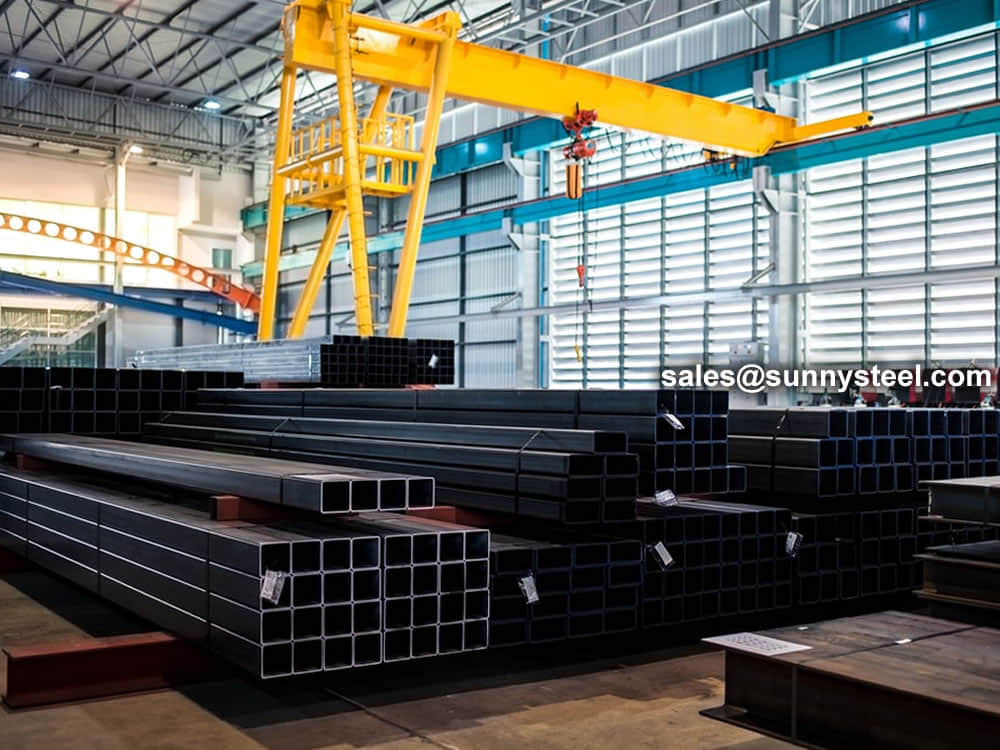
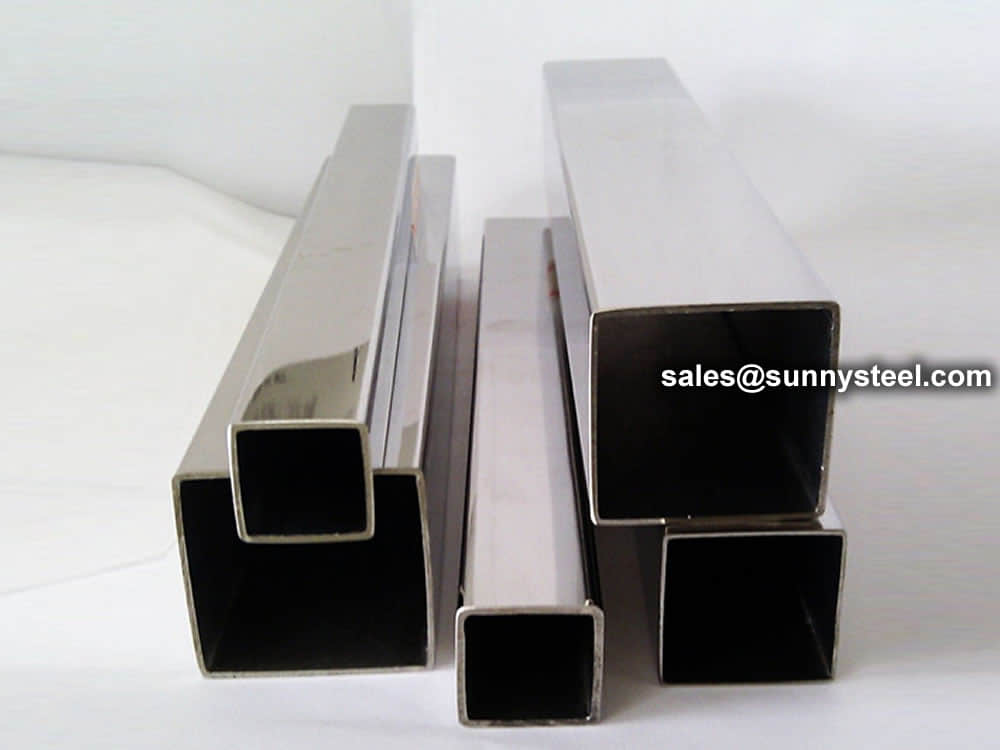
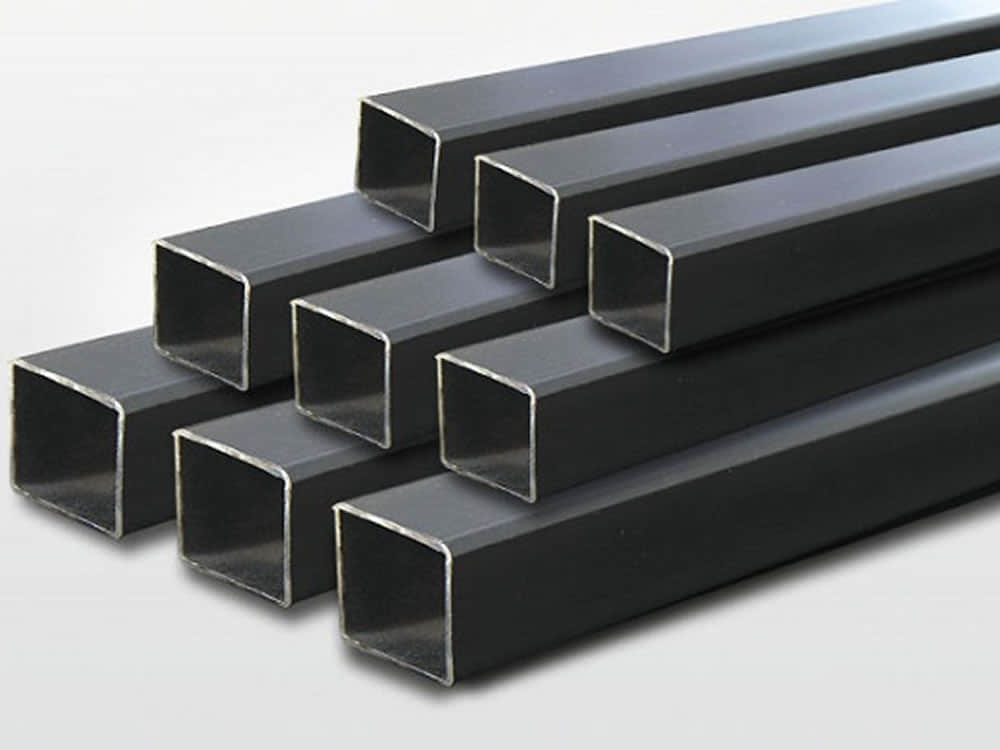
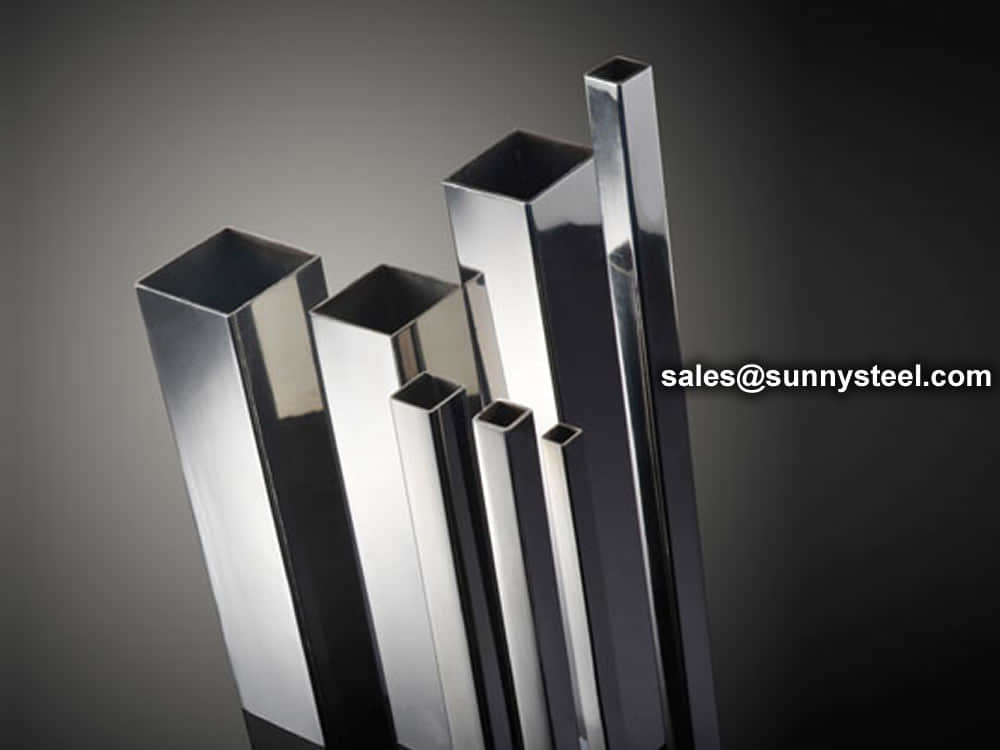
Steel Grade: Q195, Q215, Q235, Q345, S235JR, S275JR, SS4007-
| Data | Elements(%) | ||||
|---|---|---|---|---|---|
| Materal Grade | C | Mn | S | P | Si |
| Q195 | 0.06-0.12 | 0.25-0.50 | <0.05 | <0.045 | <0.30 |
| Q215 | 0.09-0.15 | 0.25-0.55 | <0.05 | <0.045 | <0.30 |
| Q235 | 0.12-0.20 | 0.30-0.70 | <0.045 | <0.045 | <0.30 |
| Q345 | <0.20 | 1.0-1.6 | <0.04 | <0.04 | <0.55 |
| Materal Grade | Yield point (Mpa) | Tensile Strength (Mpa) | Elongation(%) |
|---|---|---|---|
| Q195 | >195 | 315-430 | 32-33 |
| Q215 | >215 | 335-450 | 26-31 |
| Q235 | >235 | 375-500 | 24-26 |
| Q345 | >345 | 470-630 | 21-22 |
| Length | +/- 50 MM |
|---|---|
| Wall Thickness | +/- 12.5% |
| Weight | +/- 8% |
Square Tube is a metal that has been formed into a square tube. It is measured by taking the outside dimensions (which are the same size) and then the wall thickness.
Note: A: with, T: wall thickness, SHS:Square Hollow Section, RHS: Rectangular Hollow Section
Surface Finish: hot dipped galvanized, electro galvanized, black
Note: Pre-galvanized square / rectangular hollow section with OD 19mm-70mm and thickness 1mm-2.3mm are also available.
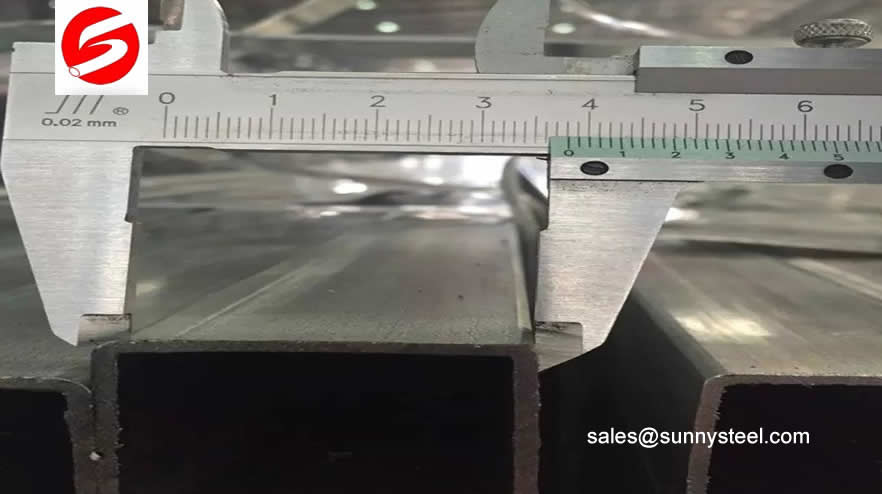
Square tubing is commonly used as a railing along staircases. However, it is also used in other, less obvious ways as well. From being used for fencing around yards to structures of buildings, as well as entry gates and entrances, a wide variety of applications are solved by steel square tubing.
Square tubing is commonly used for industrial purposes as it can provide numerous benefits. Industries value square tubing for its strength and ability to withstand extremes of temperature, pressure and destructive elements. While in domestic settings, square tubes are used in appliances, pipes, and fencing. Here are just a few of the many benefits and applications of square tubing.
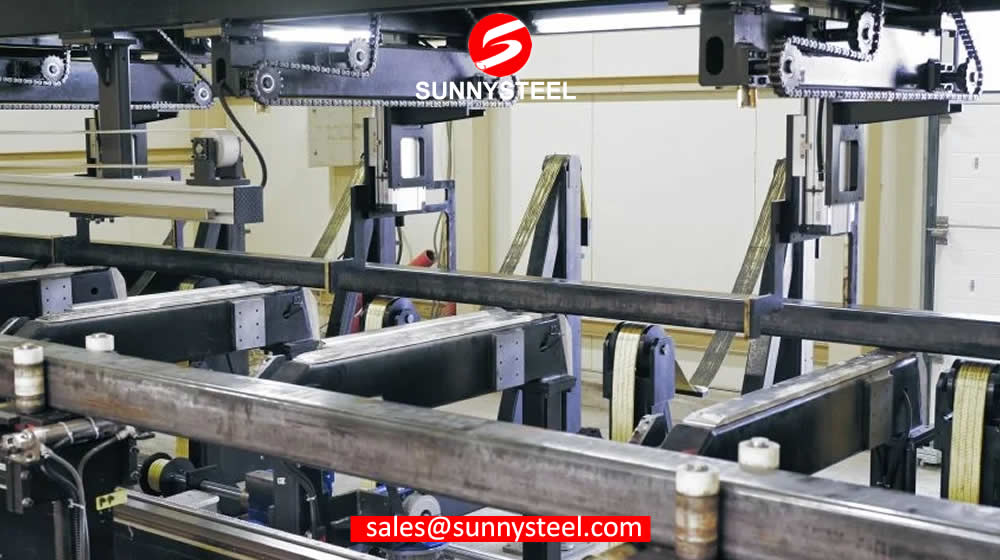
Wide Range in Sizes
Square tubing is available in an exceptionally broad range of OD and wall thickness dimensions. This makes it suitable for various applications and needs.
Large diameter thick wall rectangular tubes, often referred to as heavy wall rectangular tubing, are a type of structural steel component characterized by their rectangular cross-section and substantial wall thickness. They are engineered to withstand significant loads and offer robust solutions in a wide range of industries.
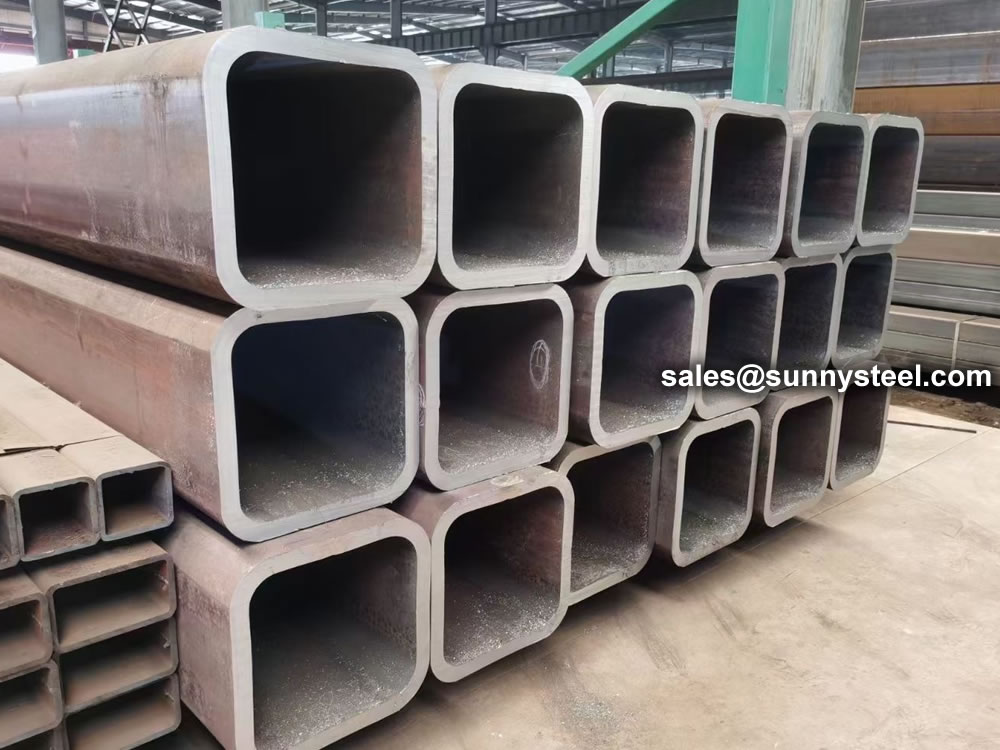
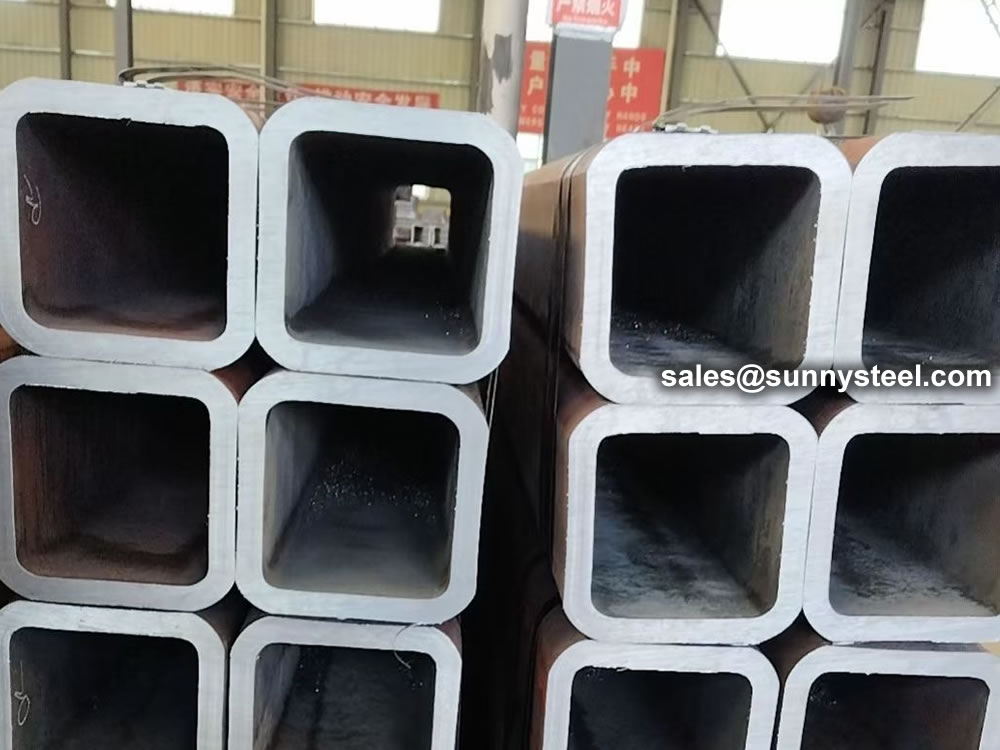

Special welded tubes, often used in critical industrial applications, require careful handling and transportation to ensure they reach their destination in optimal condition. These tubes may vary in size, material, and specifications, making their proper delivery essential.
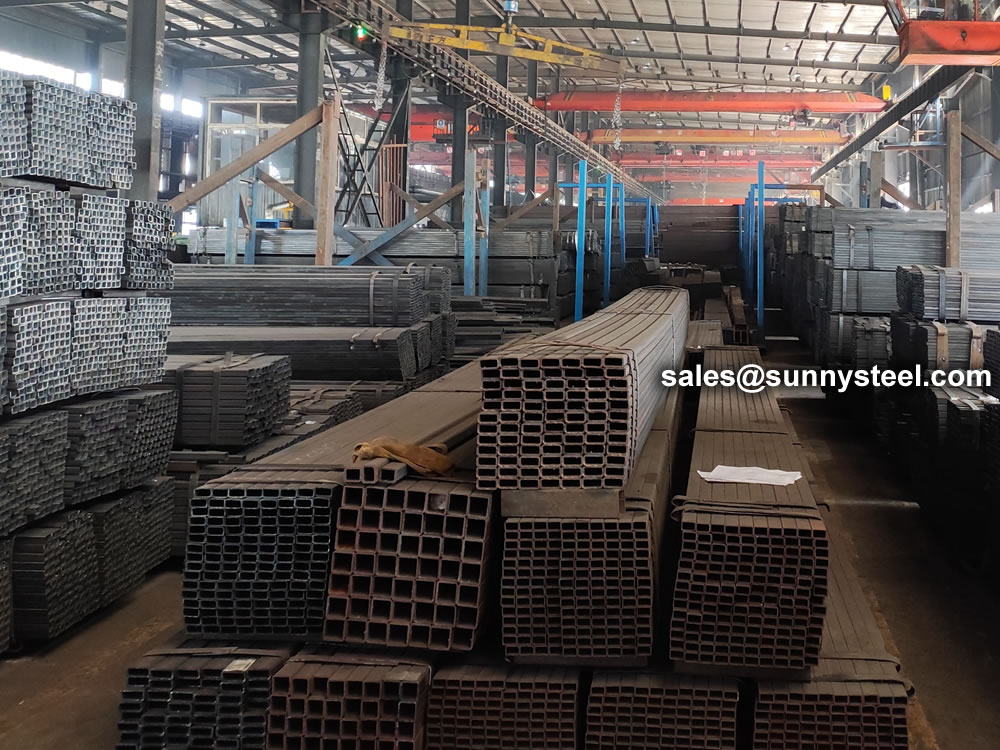
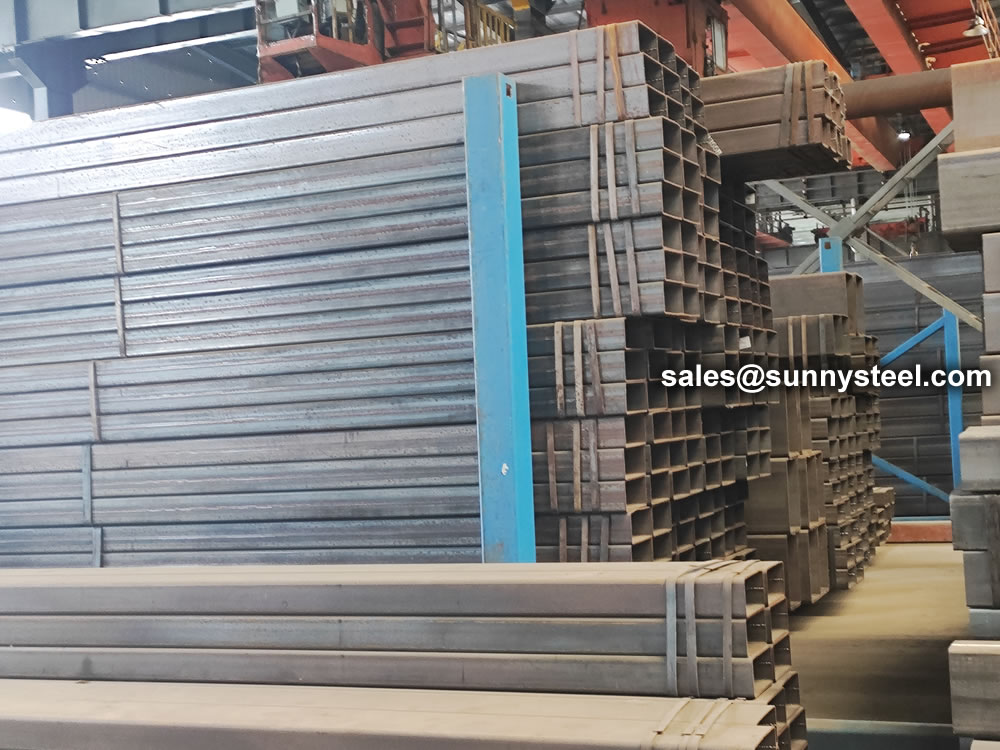

| Product Name | Executive Standard | Dimension (mm) | Steel Code / Steel Grade |
|---|---|---|---|
| Casting | API 5CT | Ø48.3~273 x WT2.77~11.43 | J55, K55, N80, L80 |
| Tubing | API 5CT | Ø48.3~273 x WT2.77~11.43 | J55, K55, N80, L80, H40 |
| Product Name | Executive Standard | Dimension (mm) | Steel Code / Steel Grade |
|---|---|---|---|
| Line Pipes | API 5L | Ø60.3~273.1 x WT2.77~12.7 | A25, A, B, X42, X46, X52, X56, X60, X65, X70, X80 |
| Product Name | Executive Standard | Dimension (mm) | Steel Code / Steel Grade |
|---|---|---|---|
| Electric-Resistance-Welded Steel Pipes | ASTM A135 | Ø42.2~114.3 x WT2.11~2.63 | A |
| Electric-Resistance-Welded Carbon Steel and Carbon-Manganese Steel Boiler and Superheater Tubes | ASTM A178 | 42.2-114.3 x 2.11-2.63 | A, C, D |
| ERW and Hot-dip Galvanized Steel Pipes | ASTM A53 | Ø21.3~273 x WT2.11~12.7 | A, B |
| Pipes for Piling Usage | ASTM A252 | Ø219.1~508 x WT3.6~12.7 | Gr.2, Gr.3 |
| Tubes for General Structural Purpose | ASTM A500 | Ø21.3~273 x WT2.11~12.7 | Gr.2, Gr.3 |
| Square Pipes for General Structural Purpose | ASTM A500 | 25 x 25~160 x 160 x WT1.2~8.0 | Carbon Steel |
| Product Name | Executive Standard | Dimension (mm) | Steel Code / Steel Grade |
|---|---|---|---|
| Threaded Steel Pipes | DIN 2440 | Ø21~164 x WT2.65~4.85 | Carbon Steel |
| Product Name | Executive Standard | Dimension (mm) | Steel Code / Steel Grade |
|---|---|---|---|
| Screwed and Socketed Steel Tubes | BS 1387 | Ø21.4~113.9 x WT2~3.6 | Carbon Steel |
| Scaffolding Pipes | EN 39 | Ø48.3 x WT3.2~4 | Carbon Steel |
| Product Name | Executive Standard | Dimension (mm) | Steel Code / Steel Grade |
|---|---|---|---|
| Carbon Steel Tubes for General Structure Purpose | JIS G3444 | Ø21.7~216.3 x WT2.0~6.0 | Carbon Steel |
| Carbon Steel Tubes for Machine Structure Purpose | JIS G3445 | Ø15~76 x WT0.7~3.0 | STKM11A, STKM13A |
| Carbon Steel Pipes for Ordinary Piping | JIS G3452 | Ø21.9~216.3 x WT2.8~5.8 | Carbon Steel |
| Carbon Steel Pipes for Pressure Service | JIS G3454 | Ø21.7~216.3 x WT2.8~7.1 | Carbon Steel |
| Carbon Steel Rigid Steel Conduits | JIS G8305 | Ø21~113.4 x WT1.2~3.5 | G16~G104, C19~C75, E19~E75 |
| Carbon Steel Rectangular Pipes for General Structure | JIS G3466 | 16 x 16~150 x 150 x WT0.7~6 | Carbon Steel |
The alloy content of the coil is often lower than similar grades of steel plate, improving the weldability of the spiral welded pipe. Due to the rolling direction of spiral welded pipe coil is not perpendicular to the pipe axis direction, the crack resistance of the spiral welded pipe materials.
Welded steel pipe refers to a steel pipe with seams on the surface that is welded by bending and deforming a steel strip or steel plate into a circular, square or other shape. The blanks used for welded steel pipes are steel sheets or strips.
Since the 1930s, with the rapid development of continuous rolling production of high-quality strip steel and the advancement of welding and inspection technology, the quality of welds has been continuously improved, and the varieties and specifications of welded steel pipes have been increasing.
When the T-shaped welded steel pipe contains Ni, it has strong corrosion resistance in an acidic environment. In an environment containing sulfuric acid or hydrochloric acid, the higher the Ni content in the T-shaped welded steel pipe, the stronger the corrosion resistance. Under normal circumstances, only adding Cr to the T-shaped welded steel pipe can prevent the phenomenon of corrosion. The poor edge condition of the strip is another important cause of misalignment. The effects of changes in mass flow, heat flow density and structural parameters (ratio of helical curvature diameter to T-shaped welded steel pipe diameter Dc/D) on the heat transfer coefficient of saturated bubble boiling in vertical spiral pipes.
During the production of T-shaped welded steel pipes, misalignment occurs from time to time, and there are many influencing factors. In production practice, the steel pipe is often degraded by the wrong side and out of tolerance. Therefore, it is necessary to analyze the reasons for the misalignment of the spiral steel pipe and its preventive measures.
Due to the poor shape and dimensional accuracy of the head and tail of the uncut steel strip, it is easy to cause the steel strip to bend hard and cause misalignment during butt joint. Simulation parameter range: vertical pipe: pipe diameter D=10mm, pipe length L=660mm; three types of vertical T-shaped welded steel pipe: pipe diameter D=10mm, the change of the ratio of the curvature diameter of the T-shaped welded steel pipe to the spiral pipe diameter is Dc /D=15, 20, 25, helical pitch Pt=20mm, tube lengths are L=503mm, L=660mm, L=817mm respectively. Mass flow G=200~400Kg/(m'2 s), heat flux density q=5~15KW/m'2, saturation pressure p, saturation=0.414880MPa, saturation temperature T, saturation=283.15K.
The technical requirements and inspection of welded pipes are based on the provisions of the GB3092 "Welded Steel Pipes for Low-Pressure Fluid Transmission". It can be delivered according to fixed length or double length. The surface of the steel pipe should be smooth, and defects such as folds, cracks, delamination, and lap welding are not allowed. The surface of the steel pipe is allowed to have minor defects such as scratches, scratches, weld misalignment, burns and scars that do not exceed the negative deviation of the wall thickness. The thickening of the wall thickness and the presence of inner seam weld bars are allowed at the weld.
Welded steel pipes should be subjected to mechanical performance test, flattening test and flaring test, and must meet the requirements of the standard. When the steel pipe should be able to withstand the internal pressure, carry out a pressure test of 2.5Mpa, and keep it for one minute without leakage. The method of eddy current flaw detection is allowed to replace the hydrostatic test. The eddy current flaw detection is carried out according to the standard of GB7735 "Steel tube eddy current flaw detection inspection method". The eddy current flaw detection method is to fix the probe on the frame, keep a distance of 3~5mm between the flaw detection and the weld seam, and conduct a comprehensive scan of the weld seam by the rapid movement of the steel pipe. The flaw detection signal is automatically processed and sorted by the eddy current flaw detector. To achieve the purpose of flaw detection. The welded pipe after the flaw detection is cut off according to the specified length with a flying saw, and it is rolled off the assembly line through the turning frame. Both ends of the steel pipe should be chamfered with flat ends, printed with marks, and the finished pipes are packed in hexagonal bundles before leaving the factory.
Straight seam steel pipe is a steel pipe whose weld seam is parallel to the longitudinal direction of the steel pipe. Generally, its strength is higher than that of straight seam welded pipe. Narrower billets can be used to produce welded pipes with larger diameters, and the same width of billets can be used to produce welded pipes with different pipe diameters. But compared with the straight seam pipe of the same length, the weld length is increased by 30~100%, and the production speed is lower. So what are its processing methods?
The surface quenching and tempering heat treatment of straight seam welded pipe is usually carried out by induction heating or flame heating. The main technical parameters are surface hardness, local hardness and effective hardened layer depth. Vickers hardness tester can be used for hardness testing, and Rockwell or superficial Rockwell hardness tester can also be used. When the surface heat treatment hardened layer is thick, the Rockwell hardness tester can also be used. When the thickness of the heat-treated hardened layer is 0.4-0.8mm, the HRA scale can be used, and when the thickness of the hardened layer exceeds 0.8mm, the HRC scale can be used.
If the parts require high local hardness, local quenching heat treatment can be carried out by means of induction heating. Such longitudinal welded pipes usually need to mark the location of local quenching heat treatment and local hardness value on the drawing. Hardness testing of longitudinally welded pipes shall be carried out in the area. The hardness testing instrument can use a Rockwell hardness tester to test the HRC hardness value. If the heat-treated hardened layer is shallow, a surface Rockwell hardness tester can be used to test the HRN hardness value.
The three hardness values of Vickers, Rockwell and Superficial Rockwell can be easily converted to each other and converted into hardness values required by standards, drawings or users. The corresponding conversion tables are given in the international standard ISO, the American standard ASTM and the Chinese standard GB/T.
